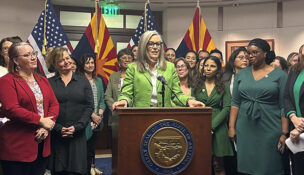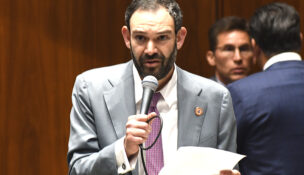Two states drop out of NGA dropout plan
Arizona Capitol Reports Staff//August 11, 2006//[read_meter]
Two states drop out of NGA dropout plan
Arizona Capitol Reports Staff//August 11, 2006//[read_meter]
A year after all 50 governors agreed to take on the high school dropout crisis by counting their graduates using a single formula, two states — North and South Dakota...
No tags for this post.

















